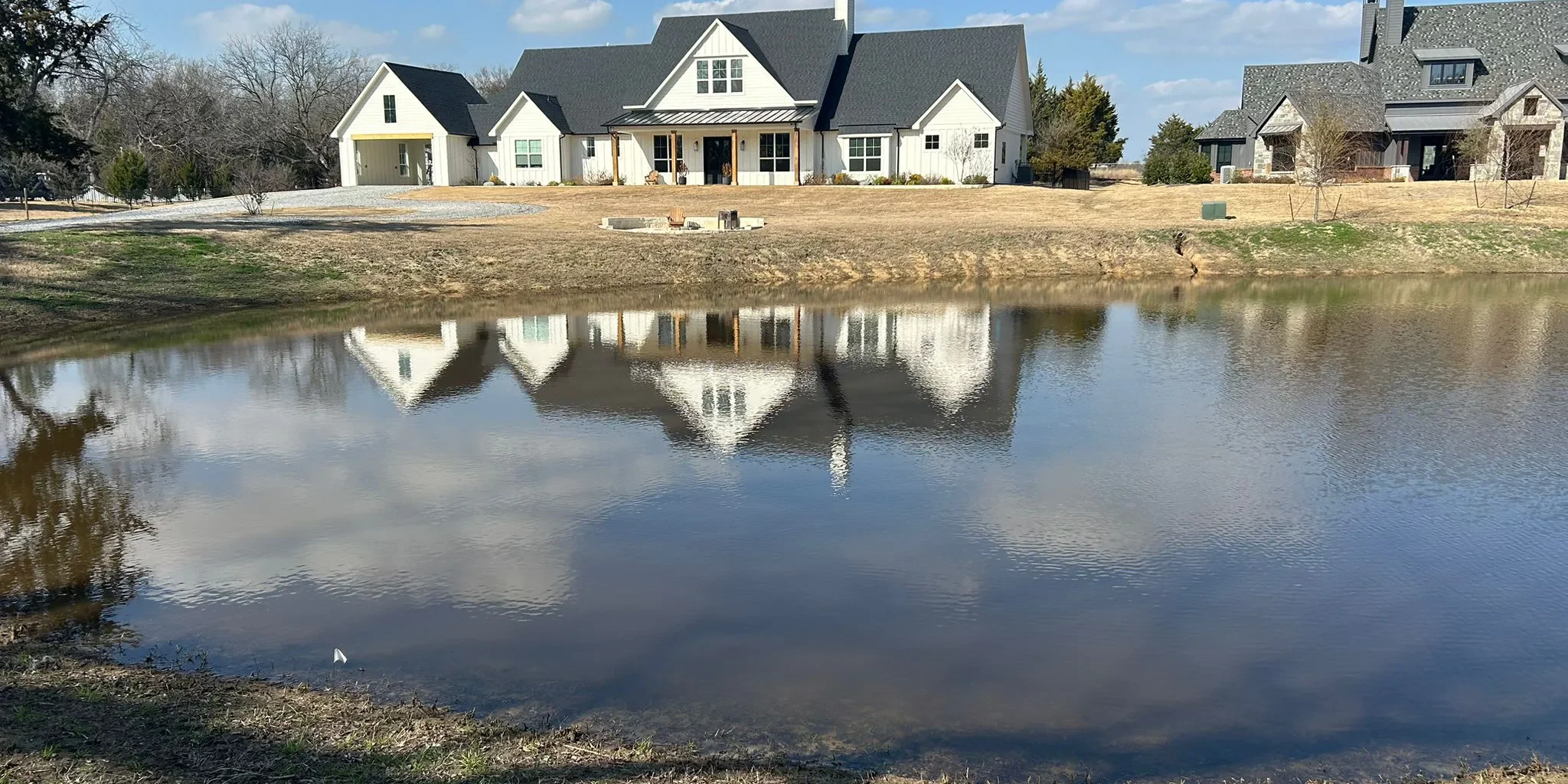Intro
When your pond is losing water, all you want is an effective way to fix it. In your attempt to find a solution, the online research and your neighbors, friends, pond gurus, etc, already told you 10 different products and methods to stop seepage, but you are still thinking, what would really work?
The reality is that most products and methods will work, but only if you use them correctly and under certain conditions.
In this guide, we’ll walk you through what we know really works: Bentonite. We will talk about what bentonite is, how it works, how much you need, and the exact steps to seal your pond like a pro.
1. What is Bentonite and Why It Works
Bentonite for ponds is a milled mineral (like a fine dust) that absorbs water and expands up to 15 times its dry volume when wet. This swelling action creates a dense, waterproof barrier that blocks seepage through cracks and porous soils.
Types of Bentonite:
- Sodium Bentonite – ideal for pond sealing (sold by Lonestar Minerals).
- Calcium Bentonite – less swelling, not recommended for pond sealing, but is excellent for agriculture and industry applications.
2. When Bentonite Works Best
Bentonite works best on clayey or loamy soils.
- Not ideal for sandy or gravelly soils; however, you can make it work by mixing it thoroughly or layering it thickly.
- Works for new ponds or to fix leaks in existing ponds (drained or filled).
3. Calculate How Much You Need
Use 1–2 lbs of bentonite per square foot for most soils; up to 5 lbs for sandy or rocky soils.
Example: A ¼-acre pond (10,890 ft²) might require 11,000–50,000 lbs, depending on soil.
Tip: Here is an online bentonite calculator that can estimate cost and quantity instantly, and get your pond information on hand.
4. Step-by-Step Application
Method 1 – Blanket Method – Pond Liner (Best Results):
- Drain the pond and clear debris; the cleaning is not optional.
- Spread bentonite evenly across the pond bottom. You can use a bobcat or a tractor to spread the material.
- Mix it into the top 4–6 inches of soil.
- Compact the surface using a roller or heavy equipment.
- Spread some water over the surface.
- Fill the pond slowly to avoid washing bentonite away.
Method 2 – Sprinkle Method (for ponds with water):
- Estimate the surface area and sprinkle granulated bentonite over it.
- Allow clay to settle and swell into cracks over time.
- It could take a couple of days to stop the leaking.
- Consult an expert before using this method.
5. Cost Breakdown
Average: $0.35–$0.75 per sq. ft., depending on soil and shipping distance.
You can get an estimate here.
6. Common Mistakes to Avoid
- Applying too little bentonite.
- Not compacting the soil.
- Skipping debris removal or soil testing.
- Not using high-quality bentonite
7. Final Tips
- Apply when the soil is dry.
- Compact thoroughly.
- Use pure sodium bentonite for the best results.
Ready to seal your pond? Contact Lonestar Minerals for wholesale sodium bentonite and professional guidance.


